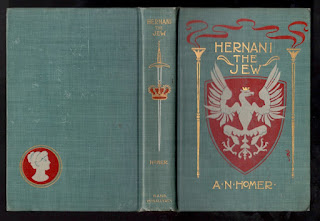Artwork from Wonderful Wizard is rarely sold, and the full page drawings used as color plates are more or less unheard of; but in the course of a little over a year, three have now turned up!
One example is in private hands, and was identified on Brady Schwind's Lost Art of Oz blog - https://www.lostartofoz.com/lost-art-of-oz-blog/lost-art-foundThe two that sold today were in the estate of a collector in Arizona; it's fascinating to see where unknown art pops up, and I can't help wondering where the drawings were prior to being in that collection. I'm afraid they didn't come this way - while I did put in a bid, I had no expectations of winning the auction!
A number of drawings from the first Oz book are in the collection of the New York Public Library, but there are still many that are unaccounted for, and could possibly be in unknown locations. But be prepared - if you hope to buy an example of Denslow's work from Wonderful Wizard, you'll need deep pockets; the final bids on todays pieces do not include the 25% buyer's premium that gets added to the total!
















